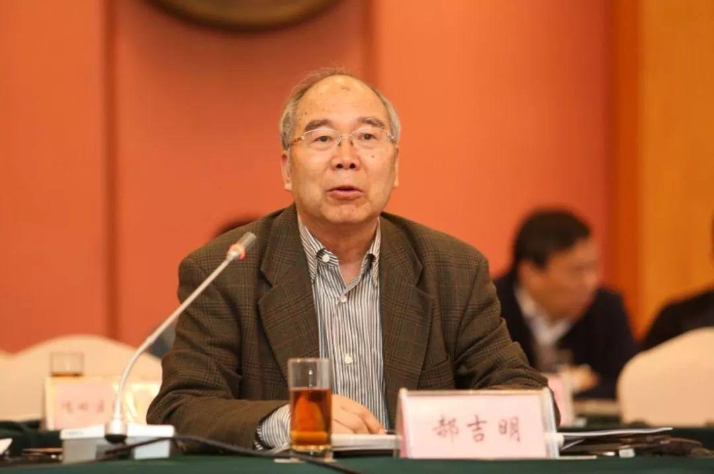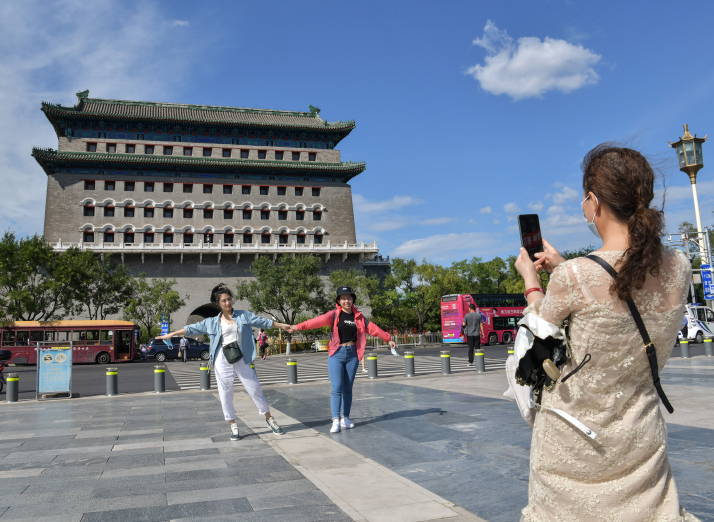| Latest News |
| Professor awarded for his contributions to the improvement in China's air quality | |
| A scientist's campaign for cleaner air | |
|
|
 Hao Jiming, professor with the School of Environment at Tsinghua University
In recent years, Beijing's air quality charts have recorded significantly fewer smoggy days. People residing in the metropolis often take to their social media accounts to share posts of picture-perfect blue skies across the capital. During the 13th Five-Year Plan (2016-20) period, the air quality within the Beijing-Tianjin-Hebei region improved substantially, with the concentration of PM2.5—exceedingly small particles in the air that are 2.5 micrometers or less in diameter—decreasing by a whopping 36 percent from 2015 to 2019, according to a report issued by the Beijing Municipal Ecology and Environment Bureau in December 2020. Behind the progress lie the relentless efforts of a research team led by Hao Jiming, a professor with the School of Environment at Tsinghua University. Hao has devoted himself to finding a cure for China's rampant air pollution in the past three decades. In December 2020, the professor, along with nine other scientists, received a prestigious award as an outstanding sci-tech professional. The award was first launched in 2018 by the Publicity Department of the Communist Party of China (CPC) Central Committee, the China Association for Science and Technology and the Ministry of Science and Technology. It is given to a highly selective list of nominees once a year. Serving the skies China suffered severe air pollution in the past decades, which propelled Hao and his team to tackle the challenges with their research. After receiving his PhD degree in 1984, Hao began to lecture at Tsinghua University. At that time, air pollution in China mainly stemmed from coal burning, a chemical process which produces sulfur dioxide and oxynitride, ultimately resulting in acid rain. Treating acid rain therefore became the research priority for Hao's team. China in those days was one of the three main regions plagued by acid rain in the world, with the problem being especially grave in south and southwest China where coal containing high levels of sulfur was burned. Acid rain had incurred huge economic losses for the country. Hao subsequently decided to tackle the problem by examining its cause and effect. Over a period of more than 10 years, Hao guided his team to power plants in a bid to uncover the key processes that led to China's soil and surface water acidification. He then proposed a plan for creating acid rain and sulfur dioxide control zones, which in turn was adopted by the State Council in 1998. Hao's plan greatly contributed to China's treatment of acid rain and sulfur dioxide produced by coal burning. During the 11th Five-Year Plan (2006-10) period, China went on to implement a new series of measures to control the overall emission of sulfur dioxide, greatly reducing acid rain.  Tourists take pictures along the Qianmen pedestrian street near Tian’anmen Square in Beijing on September 3, 2020 (XINHUA)
Dispelling dark clouds From the late 1990s, China's car ownership has skyrocketed. The pollution caused by motor vehicles captured Hao's attention. The professor's team tried to find a method to contain this source of pollution. The capital's air pollution at that time was caused by a combination of smoke from coal burning and car emissions. "Back in those days, foreign car manufacturers had already applied mature technologies to control emissions; however, Chinese carmakers, while introducing car manufacturing technologies from abroad, did not introduce their exhaust purification technologies," Hao recalled. In 1992, Europe had already implemented the Euro I emission standards, whereas China's emission standards were tantamount to those used in Europe in the 1970s. The formulation of new vehicle emission standards thus became a pressing matter. Hao's team pushed for the drafting of light vehicle emission standards in Beijing in 1998, to make China's vehicle emission standards gradually match international ones. Hao's team began to monitor fine particulate matter. After 2008, PM2.5 entered the conversations of people living and working in China, with discussions zooming in on the matter's potentially harmful health effect. Hao's team published a report on Beijing's PM2.5 from 1999 to 2010. The report disclosed that PM2.5 stemmed from both the primary emissions from polluting sources and the secondary chemical reactions of gases. The report concluded that the proportion of PM2.5 arising from secondary chemical reactions had kept rising over the past decade, posing a great risk to residents' health and reducing atmospheric visibility. In 2012, China revised its ambient air quality standards to include PM2.5 as an index for measuring air quality. In 2013, the State Council released China's Air Pollution Prevention and Control Action Plan (2013-17). From 2013 to 2017, the PM2.5 concentration in the Beijing-Tianjin-Hebei, the Yangtze River Delta and the Pearl River Delta regions decreased by 40, 34 and 28 percent respectively. In June 2018, the State Council released its Three-Year Action Plan for Winning the Blue-Sky Defense Battle to further enhance air quality. Passing down the baton In addition to carrying out research, Hao has also trained many students. Now, though 75 years old, Hao continues to teach undergraduate students. "I want to give my students a systematic understanding of air pollution," he said. He hopes his students, just as he has done, will carry out their future research based on their country's needs. Nowadays, more and more young graduates are joining Hao's team. They are trying to break new ground in the field of environmental protection. In Hao's eyes, environmental protection matters to China's long-term development as well as its residents' interests and wellbeing. He and his team still have their work cut out for them. As smog has not completely disappeared from Beijing and its vicinity areas, the team will continue to analyze the causes of pollution, and respond to public concerns. In 2020, China announced that it will strive to peak carbon dioxide emissions by 2030 and achieve carbon neutrality by 2060. As the government has set related work as a priority for 2021 at the Central Economic Work Conference, Hao said the tasks for his team are still arduous. BR (Print Edition Title: Bringing Back the Blue Skies) Copyedited by Elsbeth van Paridon Comments to jijing@bjreview.com |
|
||||||||||||||||||||||||||||
|